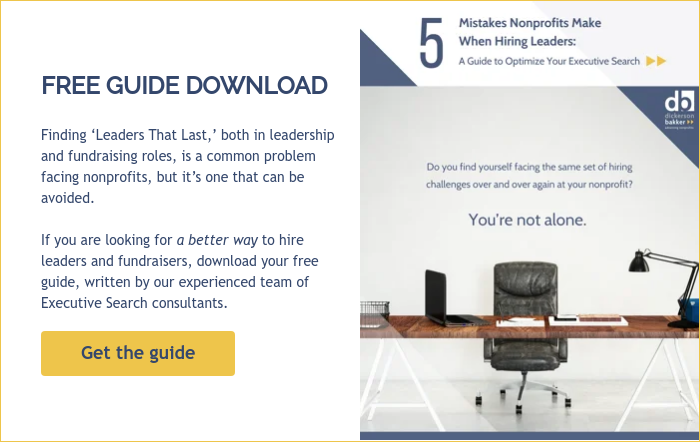In the nonprofit sector, where passion and purpose often drive operations, retaining top talent is more than just a strategic advantage—it's a necessity. In a landscape often characterized by limited resources and high demands, nonprofits must employ effective retention strategies to ensure their most valuable assets—their people—remain engaged and committed. Employee retention is crucial for maintaining organizational continuity, preserving institutional knowledge, and fostering a positive work culture.
What is Employee Retention and Why Does It Matter for Nonprofits?
Employee retention refers to an organization's ability to keep its employees from leaving. For nonprofit organizations, mastering the art of employee retention is not just beneficial; it's essential for the following reasons:
- Retaining staff helps preserve institutional knowledge, which is the bedrock of efficient operation and strategy for nonprofits.
- The costs associated with losing, hiring, and training new employees can be substantial, diverting precious resources away from the organization's core mission.
- Employees in the nonprofit sector often forge deep relationships with donors and beneficiaries, acting as the face and voice of the organization. Losing these key personnel can disrupt these vital connections and impact the organization's ability to secure funding and achieve its goals.
For nonprofits, effective employee retention strategies are not just a matter of operational efficiency but a crucial component of sustaining their mission over the long term.
Challenges to Nonprofit Employee Retention
Employee retention poses a significant challenge for many organizations, yet nonprofit entities face an even steeper uphill battle. The unique struggles within the nonprofit sector, such as employee burnout and less competitive compensation packages, exacerbate retention difficulties.
88% of nonprofits operate with annual budgets under $500,000, which often leaves minimal room for discretionary spending on programs and overhead. Even organizations with larger or more flexible financial resources can find it challenging to manage the productivity loss and increased internal costs associated with employee turnover. This often forces them to make tough decisions to balance staffing and programmatic needs.
Understaffing can exacerbate retention issues and damage organizational morale, as remaining team members are burdened with extra responsibilities. This increased workload can lead to burnout and further turnover, creating a vicious cycle that impacts the organization's effectiveness.
These organizations, driven by mission rather than profit, often operate with lean budgets, making it challenging to match the salaries and benefits offered by their for-profit counterparts. The deeply committed and passionate nature of nonprofit work can lead to burnout, as employees may find themselves wearing multiple hats and working long hours to fulfill their organization's mission. Recognizing and understanding these challenges is the first step toward addressing the retention crisis within the nonprofit sector.
11 Employee Retention Strategies for Nonprofit Organizations
Work-Life Balance
Encourage employees actively to find the right work-life balance that suits their needs and to fully utilize the range of benefits your organization offers. By prioritizing employee well-being in such a manner, you not only help in preventing burnout but also play a crucial role in retaining employees.
Demonstrating that you care about their personal and professional well-being can significantly impact their loyalty and satisfaction with the company. This approach fosters a supportive and understanding workplace culture, further enhancing overall productivity and employee morale.
Compensation Strategies
While it's true that compensation isn't the only factor influencing employee retention and turnover, its significance cannot be understated. Employees seek recognition and value for their hard work and dedication. Feeling appreciated in tangible ways, such as through fair and competitive compensation, plays a crucial role in their satisfaction and loyalty to an organization.
Even if nonprofits cannot fully match private sector salaries, making every effort to provide fair compensation demonstrates a commitment to valuing employees. This, in turn, can significantly bolster retention rates, as employees feel more satisfied and less inclined to seek opportunities elsewhere.
Moreover, investing in a competitive compensation strategy can enhance an organization's reputation, making it an employer of choice for talented individuals who are passionate about the mission but also mindful of their financial needs. In summary, while balancing budgets and compensation can be challenging for nonprofits, the effort to remain as competitive as possible in terms of salaries is a worthwhile investment in employee retention and organizational success.
Full Transparency
Your nonprofit organization's employee performance management process should rank as one of your most transparent operations. It's crucial that no employee feels left in the dark about how their work performance is evaluated.
When evaluation criteria seem cloaked in secrecy, it can lead to a tense and uncomfortable workplace atmosphere. Such environments breed uncertainty and anxiety among staff members, leaving them puzzled about the expectations set for them and unclear on the avenues available for improvement. Transparent performance management practices not only enhance employee satisfaction but also foster a culture of continuous improvement and open communication.
Realistic Goals
Goals need to be clearly defined, with a set timeframe, quantifiable metrics, and realistically attainable outcomes. Vague or unrealistic goals can lead to counterproductive results, demotivating employees rather than inspiring them. This can foster a sense of being overwhelmed and frustrated, potentially pushing talented individuals to seek opportunities elsewhere.
It's crucial for organizations to craft their goals with precision, ensuring they are both challenging and achievable to maintain motivation and prevent employee turnover.
Recruiting Practices
Selecting the right team members from the outset is crucial for enhancing long-term employee retention. While turnover due to a poor fit is an inevitable aspect of managing any organization, its frequency can be reduced. By meticulously screening candidates who not only have the necessary skills and qualifications but also align with the organization's mission, you create a workforce that is more engaged and committed to contributing to the organization's success.
Evaluate your current recruitment strategies and identify opportunities to refine and more precisely define your vetting process. Additionally, improving the candidate experience through streamlined organization and effective communication is vital. Drawing in strong candidates and making a positive first impression are key strategies for ensuring their long-term commitment to your organization.
Data-Driven Management
Quantitative data, such as metrics on your nonprofit's performance, alongside more qualitative data, like employee satisfaction and feedback, are invaluable resources. By providing employees with a clear understanding of both the numerical outcomes and the subjective experiences within your organization, you promote an environment of transparency.
This approach not only shows employees the rationale behind organizational decisions but also invites them to feel a deeper connection to and investment in the collective success of the organization. Encouraging this level of engagement ensures that employees are not just observers but active participants in the mission and vision of the nonprofit.
Recognition Strategies
Recognition plays a pivotal role in boosting engagement and is a key element in fostering a workplace culture that not only attracts but also retains employees. By acknowledging and appreciating the contributions of each team member, companies can cultivate an environment where individuals feel valued and motivated. This, in turn, enhances their commitment and loyalty, making it easier for organizations to maintain a dedicated workforce over the long term.
Career Paths
To effectively motivate and retain employees, it's crucial to provide them with a clear vision of their potential career trajectory within the organization. By meticulously laying out career paths, you give employees a tangible sense of what they can achieve by excelling in their roles over the long term.
These career paths should not be rigid but rather designed to be flexible, taking into account the evolving skills, demonstrated competencies, and expressed interests of each individual over time. This approach not only helps in aligning organizational objectives with personal career goals but also encourages continuous learning and development, making it a win-win for both the employees and the organization.
Proper Training
Courses, certification programs, practical projects, and mentoring initiatives are all valuable tools for employees to broaden their skill sets and gain a holistic understanding of your organization's mission. However, it's crucial not to overlook management; managers and leaders must be encouraged—or even required—to not only enhance their technical skills but also to polish their management and communication abilities to align with your organization's values.
Overall Work Environment
If your organization is grappling with high employee turnover rates, it's critical to take a close look at your company culture. Consider the daily experience of your employees: What are their emotions regarding their workplace? Identify the elements of their roles that they are passionate about, as well as those aspects they might not look forward to. Examine how your compensation packages, management styles, workplace environment, and other organizational practices influence overall job satisfaction.
Surveys can be an exceptionally effective tool in this regard, offering a direct line to employee perceptions and feelings. By asking the right questions, you can gain valuable insights into what motivates your staff, what challenges they face, and what changes might help in reducing turnover. Remember, understanding your employees' perspective is the first step towards creating a more positive and productive work environment.
Professional Guidance
Engaging with nonprofit professionals who possess deep experience in talent strategy and employee engagement is undoubtedly the most effective approach for creating a tailored retention plan that aligns perfectly with your organization's unique needs and available resources. These specialists bring a wealth of knowledge and insight that can drastically improve your retention strategies.
Leveraging outside expertise from companies like DickersonBakker is beneficial and can offer a comprehensive range of services including detailed audits, thorough assessments, and strategic planning tailored to either specific facets of your internal operations or the broader array of factors influencing employee retention. Such collaborations not only enhance your understanding of effective retention practices but also equip you with the tools and strategies necessary to foster a more engaged and committed workforce.
Start Boosting Employee Retention With These Tips
By implementing strategies that prioritize work-life balance, offer competitive compensation, and ensure transparency, nonprofits can create a supportive environment that values and retains its most precious resource—its people. Embracing these practices not only enhances organizational resilience and effectiveness but also reinforces the commitment to the mission that drives both employees and the organization forward.
At DickersonBakker, our Talent Solutions team is dedicated to empowering our clients to Hire Higher™. We aim to uplift your workforce, leadership, and overall organization, enhancing your capacity to make a more significant impact on the communities you serve. Contact us today to learn more!



